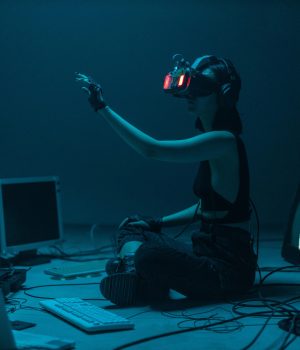I have discussed at length the importance of making sure that the problem you and your organization are facing is the correct problem to be focusing on.
Currently, we are moving toward a post-pandemic “new normal” as we navigate the tidal wave of COVID-19. In one way or another, all industries were affected, but brick-and-mortar businesses were impacted the hardest, as they were forced to close by government-mandated stay-at-home orders.
Overnight, teachers, office executives, and many other white-collar jobs turned remote while doctors, nurses, and other service industry professionals reported to new on-site tasks, labeled as essential workers and sent to the front lines to wage this terrible battle against an invisible enemy.
The businesses whose doors closed temporarily faced a situation unlike any they have ever experienced; however, COVID-19 and the shutdown was not the real /i>problem.
The real problem here is lacking the ability to pivot, continuing to make money, and staying in business when you cannot have customers physically come to your business.
The REAL problem with a global shutdown
In-person businesses may have evolved and even implemented my Anticipatory Organization® Model in recent times of constant disruptive technology, but in the case of a pandemic, they had never considered a physical disruption in operation, where they would no longer be able to allow customers through the door.
During traditional times, using anticipation to pre-solve problems is more focused on the act of what the customer does coming to the business. The disruption caused by COVID-19 leveled the playing field for brick-and-mortar businesses. It didn’t matter if you owned a clothing store, a bakery, or a salon; you were closed and there was no escaping this.
How does being anticipatory help this cause? By learning to identify the Hard Trend certainties that will happen, we gain the confidence to make innovative bold moves and see a new dimension to personal and business risk.
Exponential thinking
To be anticipatory in a pandemic requires pairing it with agility, as I have discussed at length before.
In-person businesses like restaurants implemented both anticipatory principles and paired them with agility; they offered curbside pickup for almost everything and, now going forward into the “new normal,” are paying attention to the Hard Trends shaping this new world we find ourselves in to pre-solve problems customers may encounter.
But how about businesses that don’t serve food or sell a physical product? How do they offer something similar to curbside pickup during a lockdown, and now that we are reopening, how do they pre-solve post-COVID-19 problems as an Anticipatory Organization and an industry overall?
One major way is to utilize exponential thinking, which is to look beyond just a single use of something. For example, the real estate industry utilized virtual walkthroughs of properties via Matterport technology, and many businesses in the past few years have implemented this for customers or potential employees to walk through their facility.
This way, going forward, if there is continued resurgence of this virus and we do get locked down again, they will have a plan for customers that bring in the bulk of their income, and likewise, they also regain the trust in that same clientele if they are not yet comfortable in returning, despite cleaning protocols and social distancing, as they are made aware that they are a tremendous value to your business.
Continued use of exponential technology
Consider this as well: one Hard Trend your business can be sure of is that “this pandemic will end at some point.” So, what happens to your investment in a virtual experience once customers start to come back?
Well, that virtual experience is in no way useless when patrons can physically return. Think of how many experiences you can create in your industry with wearable technology, such as a VR headset. How can you de-commoditize those experiences and make them available both on-site and off-site for consumers to consume and use at their convenience?
The key is to make sure we identify and solve the correct problem. What can you, as an Anticipatory Leader, see about the future of in-person businesses? Can you help solve the real problems on the horizon?
For more business and entrepreneurship tips, subscribe to our weekly newsletter and follow us on Twitter, Facebook, Instagram and LinkedIn.






